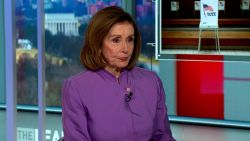A version of this story appeared in CNN Business’ Nightcap newsletter. To get it in your inbox, sign up for free, here.
Sometimes, markets tumble because of a big, unambiguous event, like a pandemic or a war or an economic slowdown. Sometimes, they fall because of less visible forces, like high-level financial shenanigans designed to generate profits out of thin air.
This week, markets have been grappling with both.
The selloff on Wall Street began last week with some fundamental concerns: Tech earnings were disappointing, and there were red flags in the US labor market that could indicate a serious slowdown in the world’s biggest economy.
But the financial shift that poured gasoline on the fire is more obscure, and so technical that even some longtime investors struggle to explain it succinctly.
When you hear commentators talking this week about the “yen carry trade” or the “great unwind,” they’re referring to a popular trading strategy that is, suddenly, blowing up in investors’ faces.
The carry trade, explained
Put simply: A carry trade is when you borrow money in a place where interest rates are low and use it to invest elsewhere in assets that generate some kind of return.
For years, the place to get money on the cheap has been Japan, where interest rates have held steadily at or near zero.
An investor could borrow Japanese yen (for a small fee) and use that yen to buy, say, US tech stocks or government bonds or the Mexican peso — all of which have offered solid returns in recent years. In theory, as long as the yen remains low against the dollar, you can pay back what you borrowed and still walk away with a tidy profit.
“For the century so far, you would have made more money in the yen-peso carry trade than you would have done in the S&P 500,” Bloomberg columnist John Authers said on the Big Take Daily podcast. “That is bonkers.”
The yen carry trade proved especially popular in the last four years, because Japan was the only major economy in the world offering essentially free money. (While the US, Europe and others were raising interest rates to fight inflation, Japan has had the opposite problem, and it kept borrowing rates low to encourage economic growth.)
Borrowing for next to nothing and getting a 5% return on a US Treasury sounds like a no-brainer.
“It’s pretty good arbitrage, but it’s not really arbitrage because it’s not risk-free,” said John Sedunov, a finance professor at the Villanova School of Business. “You need to have the exchange rate work in your favor.”
Easy money turns messy
Problems began when the yen’s value started going up a few weeks ago, eroding the potential profit from a carry trade.
Last week, the Bank of Japan raised interest rates for the second time since March, pushing the yen even higher (and thus making it more expensive to pay back your yen-based loan).
Meanwhile, the dollar weakened as the Federal Reserve strongly hinted at looming rate cuts, and US tech stocks declined. If you’re a carry trader, you headed for the exits. But so did everyone else.
This is where it gets messy.
“You can’t unwind the biggest carry trade the world has ever seen without breaking a few heads,” Kit Juckes, global macro strategist at Societe Generale, said in a note to clients Monday.
The carry trade relies on borrowing, which means it’s a leveraged position. (As a general rule, whenever you hear of leverage in finance, think “high risk.”)
Once even minor losses start to accrue, lenders are going to demand that you pony up more cash to cover your potential losses, a process known as a margin call. That may mean selling stocks to raise cash, or closing out the position completely.
“Not everybody will have a margin call at once, but the riskiest people might, and then they start to liquidate,” Sedunov said. “And then that creates losses for people down the chain, and then they have to sell things, and then it’s just this kind of spiral.”
On Monday, the Japanese stock market fell 12.4%, triggering a global rout. On Tuesday, Japan’s stocks clawed back some of their losses. US markets also rebounded. But the relief may be temporary.
“We are not done by any stretch,” Arindam Sandilya, co-head of global FX strategy for JPMorgan Chase, said on Bloomberg TV. “The carry trade unwind… is somewhere between 50%-60% complete.”
In other words: Buckle up, and don’t panic.




















 CNN's Rana Foroohar joins The Lead' class='image__dam-img image__dam-img--loading' onload='this.classList.remove('image__dam-img--loading')' onerror='imageLoadError(this)' height='1080' width='1920'/>
CNN's Rana Foroohar joins The Lead' class='image__dam-img image__dam-img--loading' onload='this.classList.remove('image__dam-img--loading')' onerror='imageLoadError(this)' height='1080' width='1920'/>

